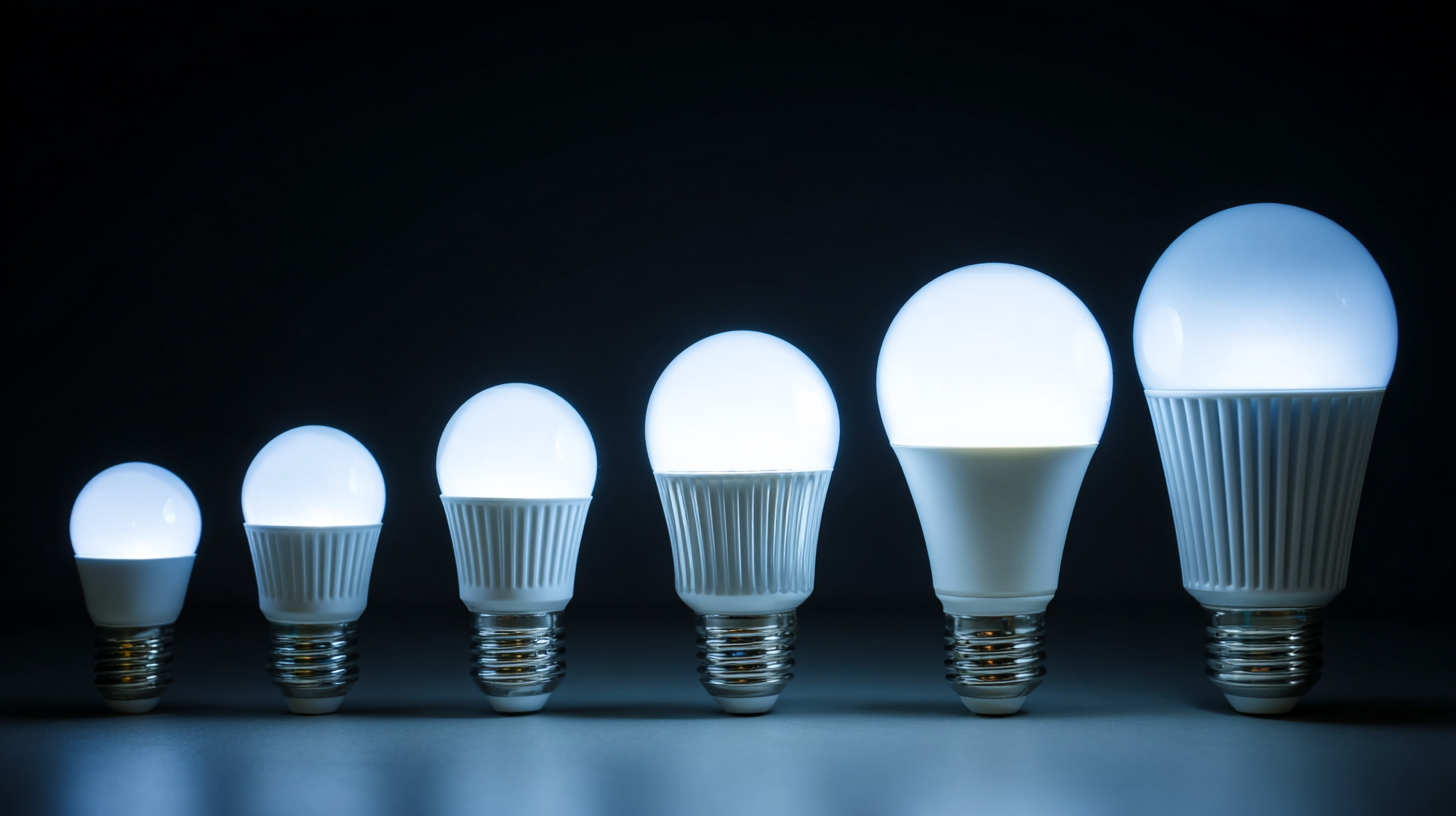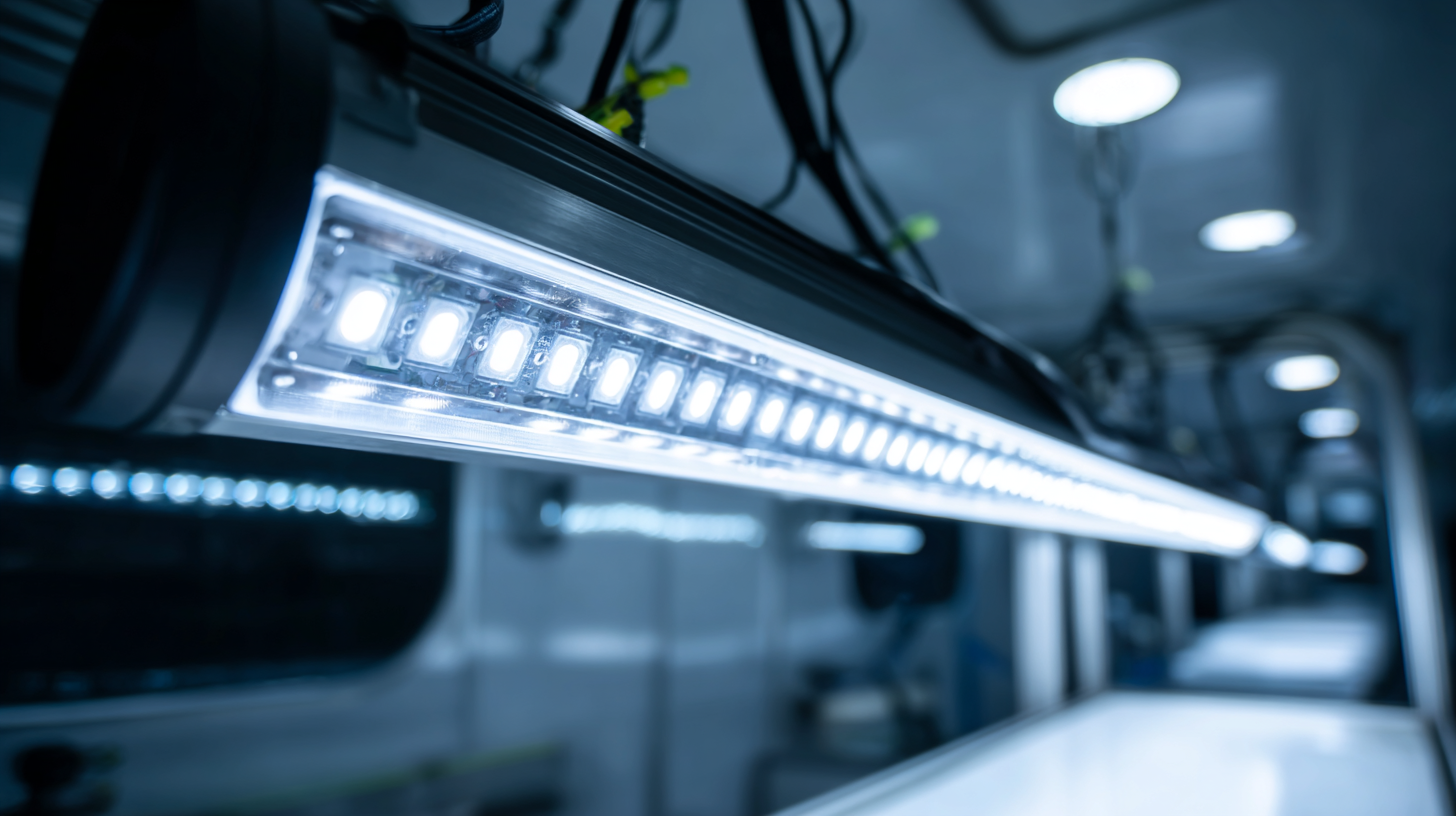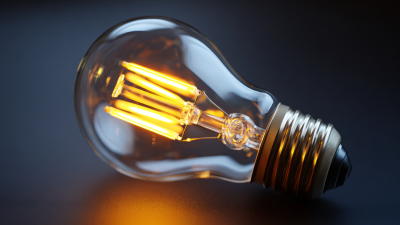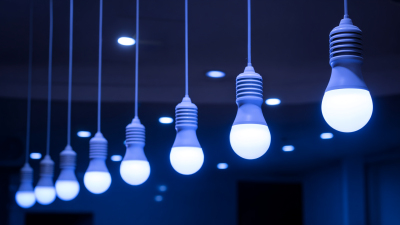How to Leverage LED Technology for Energy Efficiency and Cost Savings in Your Business
In today's fast-paced business environment, companies are increasingly seeking innovative solutions to enhance energy efficiency and reduce operational costs. One of the most impactful strategies involves the adoption of LED technology, which has proven to be a game changer across various industries. According to the U.S. Department of Energy, widespread use of LED lighting could save the nation about $30 billion in energy costs by 2027, with LEDs using at least 75% less energy and lasting 25 times longer than incandescent lighting. Moreover, a report by McKinsey indicates that businesses that invest in energy-efficient technologies, including LED lighting, can expect to see significant returns on their investment, often within just a few years. As organizations strive to meet sustainability goals while simultaneously cutting expenses, leveraging LED technology presents an unparalleled opportunity for achieving both energy savings and cost reductions.

Understanding the Basics of LED Technology and Its Advantages for Businesses
LED technology has revolutionized the way businesses approach lighting solutions. By understanding the basics of LED lighting, companies can unlock significant benefits that enhance energy efficiency and promote cost savings. LEDs consume far less energy compared to traditional incandescent and fluorescent bulbs, resulting in lower electricity bills and a reduced carbon footprint. Additionally, their long lifespan—often lasting up to 25,000 hours—means fewer replacements, translating to both savings and reduced waste.
**Tips:** When upgrading to LED lighting, consider installing smart controls such as timers and motion sensors. These systems can automatically adjust lighting levels based on usage, ensuring that energy is not wasted in unoccupied spaces. Furthermore, take the time to assess the specific lighting needs of your business environment; this can help in selecting the right LED products that provide optimal brightness while minimizing energy consumption.
Exploring the advantages of LED technology also includes its versatility in applications, from indoor to outdoor lighting. The ability to customize colors and brightness levels provides companies with greater flexibility in creating inviting atmospheres for customers and employees alike. This adaptability not only enhances the aesthetic appeal of a space but also contributes to overall productivity and employee satisfaction.
How to Leverage LED Technology for Energy Efficiency and Cost Savings in Your Business
| Dimension | Data |
|---|---|
| Average Lifespan of LED Bulbs | 25,000 - 50,000 hours |
| Energy Savings Compared to Incandescent Bulbs | 75% - 80% |
| Cost per LED Bulb (Average) | $5 - $20 |
| Annual Cost Savings per LED Suite | $100 - $200 |
| Reduction in CO2 Emissions | Up to 50% per year |
| Heat Output Comparison | Less than 30% of incandescent bulbs |
| Types of LED Applications | Indoor, Outdoor, Street, Industrial |
Evaluating Your Current Lighting System and Identifying Areas for Improvement
 Assessing your current lighting system is the first essential step toward improving energy efficiency and reducing costs. Begin by conducting a thorough audit of your existing lighting setup. Take note of the type of bulbs in use, their wattage, and the areas that are frequently used in your business. Understanding your current energy consumption will help you identify potential areas for improvement and set benchmarks for future upgrades.
Assessing your current lighting system is the first essential step toward improving energy efficiency and reducing costs. Begin by conducting a thorough audit of your existing lighting setup. Take note of the type of bulbs in use, their wattage, and the areas that are frequently used in your business. Understanding your current energy consumption will help you identify potential areas for improvement and set benchmarks for future upgrades.
Tips: Consider replacing outdated incandescent or fluorescent bulbs with LED alternatives, which use up to 80% less energy. Additionally, assess whether your lighting design maximizes daylight utilization through strategic placement of fixtures that complement natural light sources. This simple modification not only enhances the aesthetic appeal of your workspace but also reduces reliance on artificial lighting during daylight hours.
Once you have a clear understanding of your lighting system, explore energy-efficient solutions tailored to your business needs. Look into smart lighting controls, such as motion sensors and dimmers, to further optimize your energy use. These technologies enhance convenience while ensuring lights are only on when required, significantly lowering electricity bills.
Tips: Implementing a lighting management system can also provide real-time data on usage patterns, guiding you in making informed decisions about your lighting needs. By systematically evaluating and upgrading your lighting system, you pave the way for substantial energy savings and improved overall efficiency in your operations.
Implementing LED Solutions: Step-by-Step Guide for Businesses
Implementing LED solutions can significantly enhance energy efficiency and lead to substantial cost savings in businesses. According to the U.S. Department of Energy, LED lighting can reduce energy consumption by up to 75% compared to traditional incandescent bulbs. This is particularly beneficial for businesses that operate in commercial buildings, which are estimated to account for about 19% of total U.S. energy consumption. Transitioning to LED technology not only lowers electricity bills but also extends the lifespan of lighting systems, reducing replacement costs and downtime.

To implement LED solutions effectively, businesses should begin with an energy audit to assess current lighting systems and identify areas for improvement. Following this, selecting the right LED products based on specific operational needs is crucial. For instance, the Lighting Research Center reports that the initial investment in LED technology often pays off within two to three years due to ongoing savings in energy and maintenance. Furthermore, businesses can benefit from potential rebates offered by utility companies, further decreasing upfront costs. A phased approach to lighting upgrades can also help in managing expenses while maximizing operational efficiency.
Calculating the ROI of Switching to LED Lighting in Your Operations
Calculating the Return on Investment (ROI) of switching to LED lighting in your operations is crucial for any business looking to enhance energy efficiency and reduce costs. To begin this assessment, it is important to consider the initial costs associated with purchasing and installing LED light fixtures. While the upfront investment may be higher than traditional lighting options, the longevity and durability of LEDs often result in significant savings in both energy bills and maintenance expenses over time.
When calculating ROI, businesses should also evaluate the energy savings achieved by using LED technology. LEDs consume up to 75% less energy compared to incandescent and fluorescent bulbs, leading to lower operational costs. Moreover, the reduced need for replacements due to their longer lifespan directly contributes to cost savings in labor and disposal. By comparing these financial benefits against the initial investment, businesses can establish a clearer picture of the potential ROI. Consequently, leveraging LED technology not only promotes sustainability but also creates a compelling economic case for modernization within various operational settings.
ROI of Switching to LED Lighting in Business Operations
Best Practices for Maintaining LED Fixtures to Maximize Longevity and Efficiency
To maximize the longevity and efficiency of LED fixtures in your business, regular maintenance is crucial. Keeping the fixtures clean is one of the simplest yet most effective practices. Dust and grime can accumulate on the surface, diminishing the light output and affecting energy consumption. Establish a routine cleaning schedule using soft cloths and non-abrasive cleaners to ensure optimal performance. Additionally, inspect the fixtures for any signs of wear, such as flickering or discoloration, which may indicate that replacement is necessary.
Another best practice involves monitoring the operating environment of the LED fixtures. High temperatures and poor ventilation can significantly reduce their lifespan. Make sure to install LEDs in areas that allow for adequate airflow and maintain a stable temperature. Furthermore, consider implementing a dimming system or smart lighting controls to adjust brightness according to real-time needs, thereby extending fixture life and enhancing energy efficiency. By adopting these maintenance strategies, businesses can not only ensure the reliable operation of LED lighting but also achieve significant cost savings over time.
Related Posts
-

How to Harness the Power of LED Technology for Energy Efficiency
-

How to Maximize Energy Efficiency with LED Technology for Your Business Operations
-

Benefits of Using LED Fixtures for Enhanced Energy Efficiency
-

Unlocking the Advantages of Choosing LED Solar Lights for Your Business Needs
-

What Are the Benefits of LED Landscape Lights for Outdoor Spaces
-

How to Choose the Right LED High Bay Fixtures for Your Commercial Space
